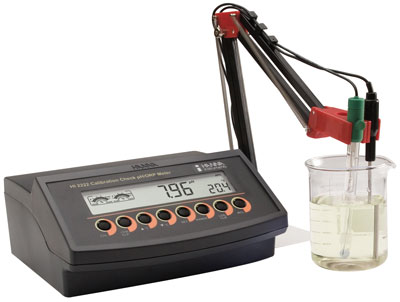Post-Fermentation Wine Acid Adjustment
Q: My 2021 Merlot (I’m up in Washington State) finished out fermentation with a pH of 3.85. I added some tartaric acid (about 0.5 g/L) right before fermentation, but that pH is a little higher than I’d want. Is it OK to add tartaric acid after fermentation? Any tips on how to do it so I don’t overdo it?
— Clay Johnson • Leavenworth, Washington
A: Great topic and great questions. If you’ve read my columns over the years, you’re familiar with my mantra of acid being the “backbone” of wine, as well as the importance of having the correct pH for long-term aging. The higher the pH (lower acidity), the more spoilage organisms like Lactobacillus and Acetobacter can get a foothold and perhaps eventually spoil your wine. Additionally, having a higher acid level helps your free SO2 additions be more effective; the lower the acid level, the more SO2 you must add for a comparative efficacy.
Post-malolactic fermentation (MLF) I like to keep my red wines below 3.65 pH and my whites below 3.5. Oftentimes, as you know, the pH will creep back up after primary fermentation or, post-press, will be much higher than you anticipated, even with a pre-fermentation acid addition. This is extremely normal and happens even to professional winemakers (shhh, just don’t tell anyone!). Because post-primary fermentation pH is really hard to predict, tweaking that pH back down with a little tartaric acid can be just the ticket.

Here’s how to plan for and think about your post-fermentation acid additions:
Add at the right time: While it’s always best to do “big moves” on wine chemistry as early as possible (this gives the wine time to adjust and integrate over time) by acidulating before you begin primary fermentation, it’s OK to adjust afterwards. I recommend doing this immediately after MLF has completed so you don’t give potential spoilage organisms a chance to get much of a foothold. Another reason not to wait: If you add acid right before bottling it can stick out style-wise like a sore thumb and will not taste like a natural, integrated part of the wine.
Do bench trials first: Ah, the Wine Wizard’s other mantra: “Do your bench trials, my children!” (How many years have you been hearing me say that?) Well, I repeat it so often because it’s so important. There’s nothing worse than trying to make a little tweak only to find that you’ve made your wine so tart it’s undrinkable. The solution is to do tiny trials using small, measured amounts of your wine as well as
your additive. My favorite volume to work with is 50 mL of wine. Then you can either measure in dry powder (if you have a scale that goes down to units that small) or dose in little amounts of a 10% (10 g/100 mL) solution of tartaric acid until you get to a level that has the taste and balance you want.
If you’ve got a pH meter and can check what kind of final measurement that gives you, even better. If you’re serious about winemaking (or brewing, or kombucha, or cider, etc.) you’ll want to invest in a couple of micropipettes (Eppendorf is a classic brand, but there are other, cheaper options available. Micropipettes, which can measure out 5–100 or 100–1,000 microliters. Note that 1,000 microliters = 1 mL) to allow one the ability to run all sorts of bench trials on small amounts of wine and even smaller amounts of additives.
Another great benefit of acidulating after your wine is pressed is that you can measure out exactly how much you’ll need, an almost impossible task when your grapes are sitting on skins.
Re-check post-addition: After you make your tartaric addition (after your bench trials show you the indicated amount), make the addition, stir it into the wine completely, and re-check the pH and titratable acidity, or TA, (if you can) about 24–48 hours afterwards. This will help to ascertain if your addition was done correctly.
Keeping your acidity at appropriate levels (high enough, pHs low enough) after malolactic fermentation is complete is critical for proper wine health and aging. Not only will an appropriate acid level make sure spoilage bacteria have a harder time getting a foothold, it’ll make your wine taste more balanced and will make your free SO2 additions more effective. Best of luck with your wine!


